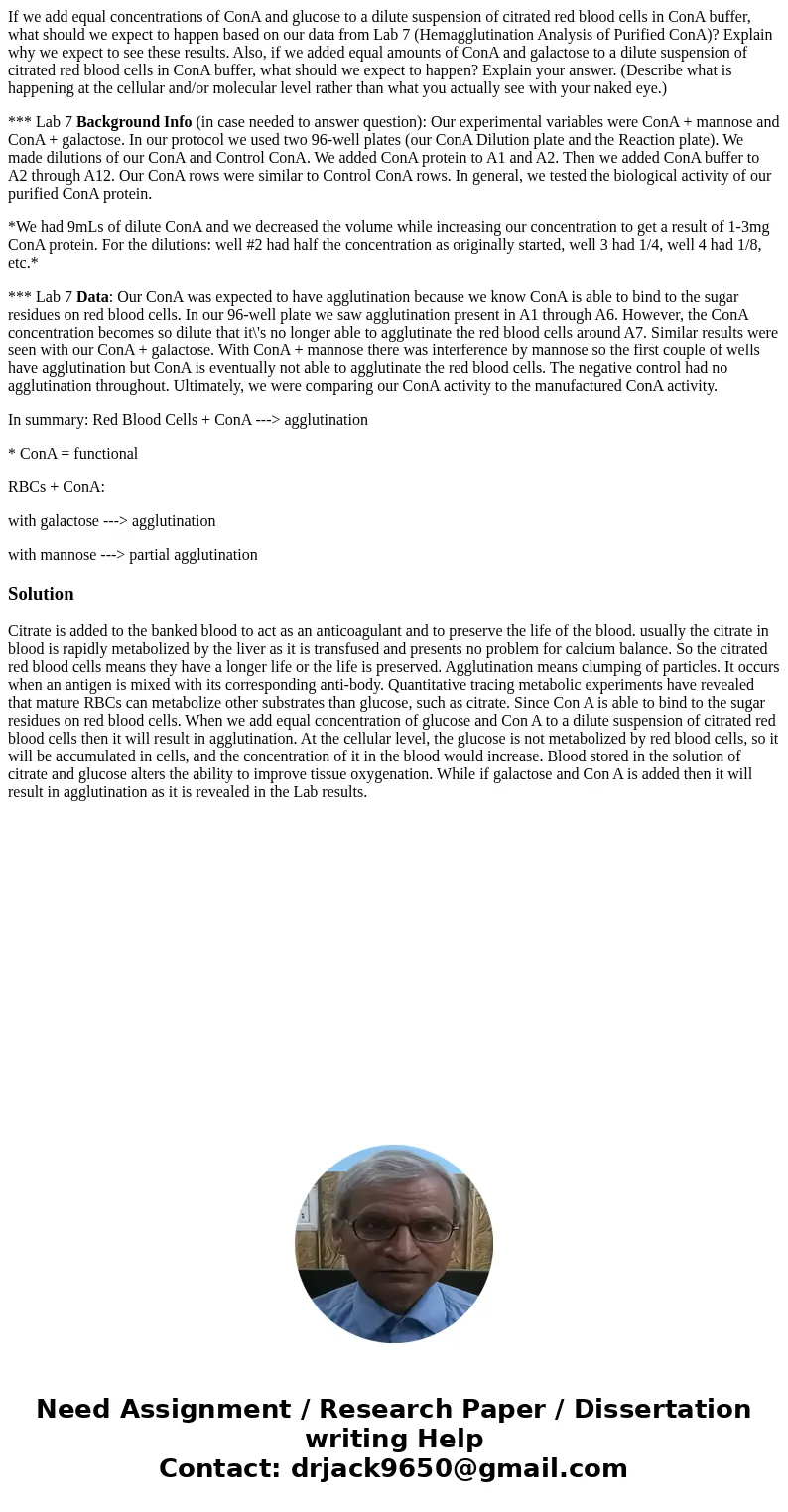If we add equal concentrations of ConA and glucose to a dilu
If we add equal concentrations of ConA and glucose to a dilute suspension of citrated red blood cells in ConA buffer, what should we expect to happen based on our data from Lab 7 (Hemagglutination Analysis of Purified ConA)? Explain why we expect to see these results. Also, if we added equal amounts of ConA and galactose to a dilute suspension of citrated red blood cells in ConA buffer, what should we expect to happen? Explain your answer. (Describe what is happening at the cellular and/or molecular level rather than what you actually see with your naked eye.)
*** Lab 7 Background Info (in case needed to answer question): Our experimental variables were ConA + mannose and ConA + galactose. In our protocol we used two 96-well plates (our ConA Dilution plate and the Reaction plate). We made dilutions of our ConA and Control ConA. We added ConA protein to A1 and A2. Then we added ConA buffer to A2 through A12. Our ConA rows were similar to Control ConA rows. In general, we tested the biological activity of our purified ConA protein.
*We had 9mLs of dilute ConA and we decreased the volume while increasing our concentration to get a result of 1-3mg ConA protein. For the dilutions: well #2 had half the concentration as originally started, well 3 had 1/4, well 4 had 1/8, etc.*
*** Lab 7 Data: Our ConA was expected to have agglutination because we know ConA is able to bind to the sugar residues on red blood cells. In our 96-well plate we saw agglutination present in A1 through A6. However, the ConA concentration becomes so dilute that it\'s no longer able to agglutinate the red blood cells around A7. Similar results were seen with our ConA + galactose. With ConA + mannose there was interference by mannose so the first couple of wells have agglutination but ConA is eventually not able to agglutinate the red blood cells. The negative control had no agglutination throughout. Ultimately, we were comparing our ConA activity to the manufactured ConA activity.
In summary: Red Blood Cells + ConA ---> agglutination
* ConA = functional
RBCs + ConA:
with galactose ---> agglutination
with mannose ---> partial agglutination
Solution
Citrate is added to the banked blood to act as an anticoagulant and to preserve the life of the blood. usually the citrate in blood is rapidly metabolized by the liver as it is transfused and presents no problem for calcium balance. So the citrated red blood cells means they have a longer life or the life is preserved. Agglutination means clumping of particles. It occurs when an antigen is mixed with its corresponding anti-body. Quantitative tracing metabolic experiments have revealed that mature RBCs can metabolize other substrates than glucose, such as citrate. Since Con A is able to bind to the sugar residues on red blood cells. When we add equal concentration of glucose and Con A to a dilute suspension of citrated red blood cells then it will result in agglutination. At the cellular level, the glucose is not metabolized by red blood cells, so it will be accumulated in cells, and the concentration of it in the blood would increase. Blood stored in the solution of citrate and glucose alters the ability to improve tissue oxygenation. While if galactose and Con A is added then it will result in agglutination as it is revealed in the Lab results.

 Homework Sourse
Homework Sourse